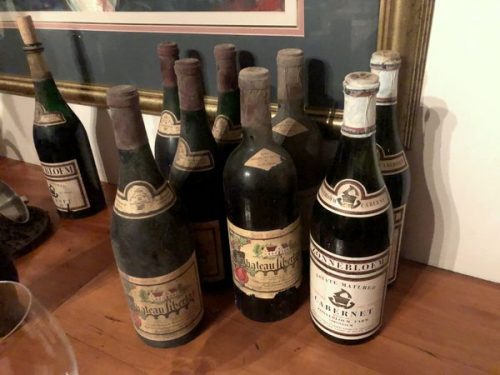
Put on by The Whole Bunch crew (a newly formed association of some of the Cape’s most exciting producers), this was a remarkable and thrilling tasting. The wines come from the cellar of Bill Winshaw, the grandfather of JP and Pierre Winshaw who hosted the tasting at Usana, their family farm.
A short film of the tasting:
Their great grandfather, Charles Winshaw founded the Stellenbosch Farmers Winery (SFW) in 1924, which later, under Bill Winshaw’s stewardship, became pivotal in making and bottling wines from some of the top estates in the region, including the wines in this tasting. He kept the wine in a cellar built under his kitchen, stored at a consistent temperature, but there is a natural spring there and in a wet winter it gets pretty damp. But the cellar is a good one, as these wines showed. SFW merged to become Distell in 2000, and they still have a nice collection of very old wines in their Tabernacle Cellar. Indeed, I’ve tried a few, so I knew old South African reds could age. It’s just that this tasting took that experience next level.
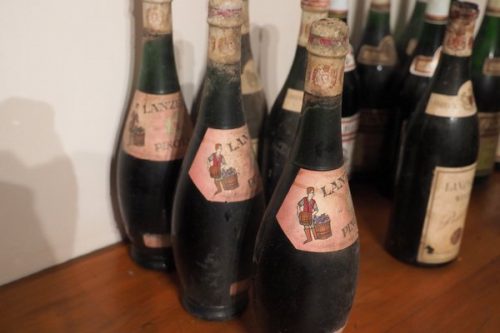
We started off with some old vintages of the iconic Lanzerac Pinotage, which in the 1960s onwards were bottled in the distinctive skittle-like bottle with a pink label. These wines were sold and marketed through the Stellenbosch Farmers Winery, and the grapes came from Bellevue in the Botteleray sub region.
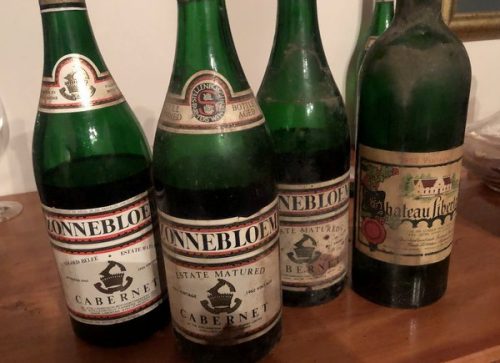
Then we looked at some Zonnebloem wines, and finally old bottles of Chateau Libertas, which was owned by Winshaw.
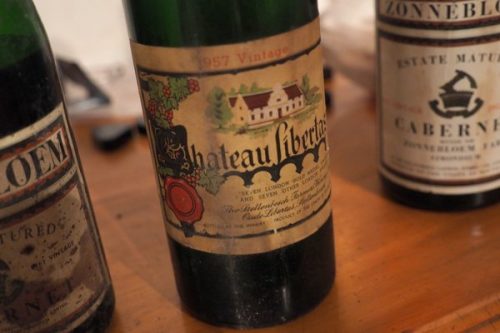
Nothing is documented so we don’t know how the wines were made. In those days a lot of wines were blends across vintages and varieties, even if the wine is varietally and vintage labelled. Big juicy Cinsault berries used to grease the press for the small cabernet berries. There was very little Cabernet planted at the time. And as well as Cinsault adding freshness and ageability, Pinotage was also added to some of the Libertas wines.
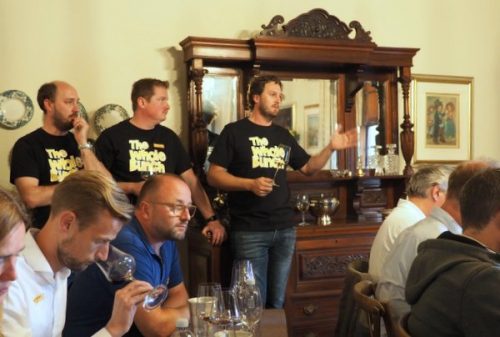
Fermentation for these wines would typically have been in open cement tanks, and then they were transferred to large barrels. Sometimes old Port barrels were used, which some have speculated might add a bit of sweetness. Interestingly, some of the hands off techniques that would have been normal then are now being returned to by the younger generation of winemakers. The way these wines have aged shows that they were made properly, with grapes picked at appropriate ripeness (not too later). It shows how unnessercary small new oak is for most South African wines, too.
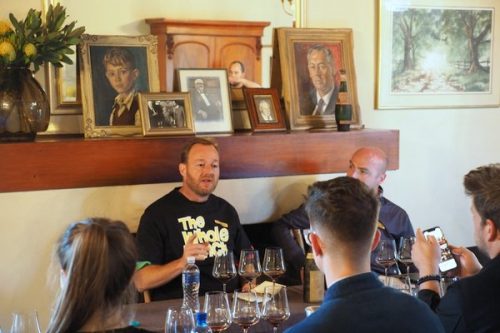
The market for dry table wines here was small at this time: much of the market was for fortifieds and sweet wine. And as a result there were only a dozen or so bottled dry red wines on the market. These were expensive wines at the time: almost on a par with the very top imported wines.
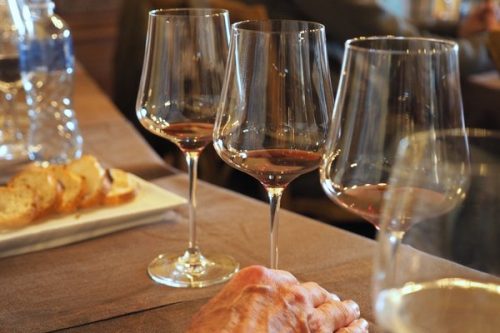
It’s hard to over-emphasize how impressive these wines are: as the scores reflect, these were profound wine experiences. We didn’t need to make any excuses for them, which is very rare when you are tasting wines over 50 years old.
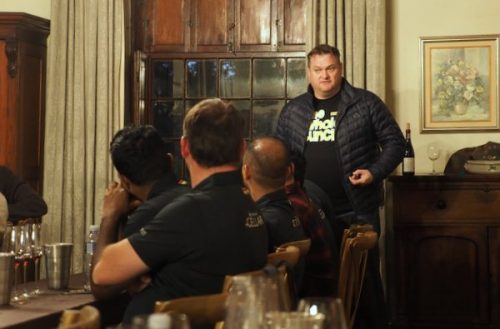
Lanzerac Pinotage 1963
Warmly aromatic with a hint of caramel. Sweet herbs, nice open red cherry and berry fruits. There’s lots of fruit here, with sweet cherries and plums, and some leather and herbs, as well as some tea. Elegant and pure with nice precision. This has aged beautifully: it’s mature and expressive with no tiredness at all. 97/100
Lanzerac Pinotage 1961
Still fresh, with nice acidity under the sweet plum and cherry fruit. There’s lovely focus here: sweet berries, fine herbs, a hint of caramel, lovely notes of tea and herbs. Very fine green herby notes under the sweet fruit. Real finesse here: a really lovely wine that has aged beautifully. 95/100
Lanzerac Pinotage 1959
This was the first commercial release of Pinotage. Very fine and expressive with a hint of green and some notes of tobacco and tea, together with vibrant berry and cherry fruit. Harmonious and expressive with maturity but also freshness. This has aged so nicely with amazing purity considering its vintage. Subtle earthy notes, too. A really beautiful wine. 96/100
Zonnebloem Cabernet Sauvignon 1966
Mature nose with some sweet caramel and raisin notes. Smooth and expressive with lovely cherry and berry fruits. Finely spiced and harmonious, showing its age a little bit with a porty (tawny) sweetness on the finish. 92/100
Zonnebloem Cabernet Sauvignon 1962
Wax and nuts on the nose as well as elegant sweet cherries and strawberries. Fine grained and a bit spicy with attractive ripeness, and showing a little bit of age but also remaining fresh and expressive. This is harmonious and mellow with a lovely ease to it. 93/100
Zonnebloem Cabernet Sauvignon 1961
This is really precise, given its age. Lovely cherry and berry fruit with hints of wax and a bit of spice. There’s some grainy structure with good acidity. Lovely precision to the cherry and berry fruits. There are notes of leather and earth, too. It has aged beautiful with lovely balance. 95/100
Chateau Libertas 1965
First vintage was 1932 so it is the longest continuously made wine in South Africa. A blend of Pinotage and Cinsault blended with Cabernet Sauvignon. Mature nose: spicy, a bit raisiny, some hints of earth and leather. The palate is bright with good acidity and some spicy richness, as well as a bit of volatile acidity. Lively and quite complex, showing some age, with a warm, raisiny, earthy finish. 91/100
Zonnebloem Cabernet Sauvignon 1957
Savoury wax and earth notes on the nose. Compact with good structure, and lovely sweet liqueur-like berry fruits. There’s a lovely density on the palate with a nice taut fruity personality. Finishes grippy and fresh with perhaps a hint of deviation, but not much. Lovely stuff. 96/100
Chateau Libertas 1957
12.8 alcohol, pH 3.49, acid 6.8 g/l. There’s so much brightness to this wine. Herbs, spices, plums and cherries with pure fruit and a nice grainy, grippy structure to it. Very impressive with real focus and still a bit of robustness. Beautiful stuff. 97/100